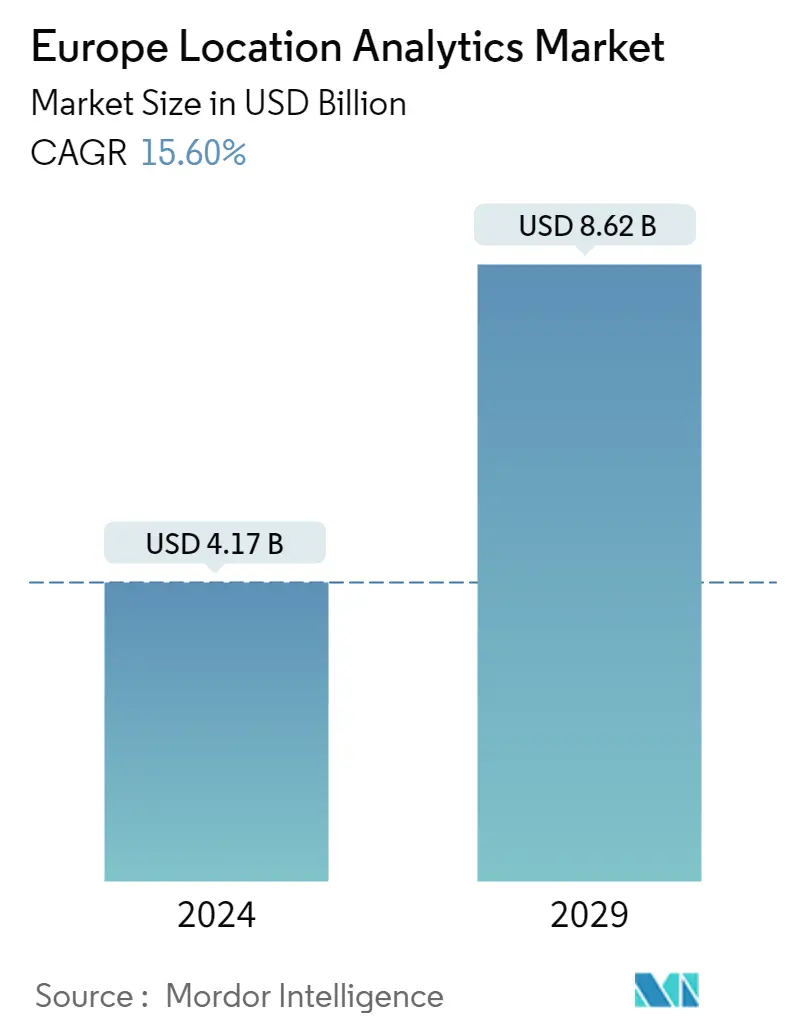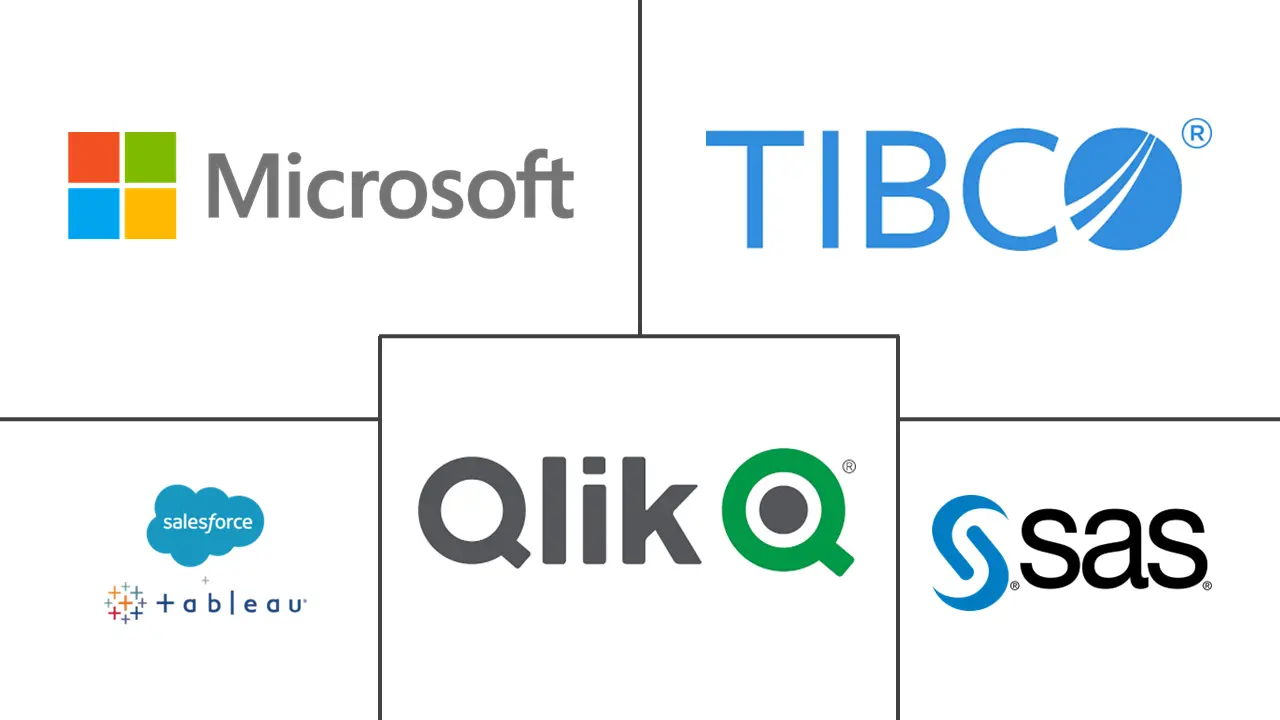Market Size of Europe Location Analytics Industry

| Study Period | 2019 - 2029 |
| Base Year For Estimation | 2023 |
| Market Size (2024) | USD 4.17 Billion |
| Market Size (2029) | USD 8.62 Billion |
| CAGR (2024 - 2029) | 15.60 % |
| Market Concentration | Medium |
Major Players
*Disclaimer: Major Players sorted in no particular order |
Need a report that reflects how COVID-19 has impacted this market and its growth?
Europe Location Analytics Market Analysis
The Europe Location Analytics Market size is estimated at USD 4.17 billion in 2024, and is expected to reach USD 8.62 billion by 2029, growing at a CAGR of 15.60% during the forecast period (2024-2029).
Geospatial data analytics, it adds features of place and time to data to make it more understandable. Location analytics is actionable information that assists both the public and corporate sectors in identifying patterns and making strategic decisions. Location analytics in the region would help in critical sectors such as urban planning, transportation, natural disasters, and park preservation, to name a few.
- The location analytics market is anticipated to gain more traction with the development of Artificial Intelligence(AI) and Machine Learning (ML). The next major potential for Europe's sustainable economic growth will come from its dominance in space constellations and national efforts like Digital Strategy Europe and Destination Earth. Hence these technologies will be used in the spatial development of urban areas of the continent.
- Accurate location tracking has improved with the introduction of 5G. 5G location delivers improved precision and permits a higher fingerprint resolution in the database thanks to its usage of millimeter waves and beamforming. This has also improved indoor mapping. Users can get 3D indoor geospatial views of many infrastructure types, including auditoriums, airports, music halls, theaters, factories, buildings housing the government and the general public, malls, and other retail establishments. Also, it was noted, Point-level assignments provide advantages over address-level geocoding.
- In August 2023, Members of EuroGeographics, a non-profit organization for European National Mapping, Cadastral and Land Registration agencies, and the International Cartographic Association (ICA) established a new partnership to emphasize the impact of location. High quality and dependability are the core values of members of EuroGeographics, serving as the national authority for Europe's official high-value geospatial information.
- To lessen the COVID-19 pandemic's effects, the European Data Protection Board (EDPB) published guidelines for using contact tracking software and location data. All digital interventions are covered by Europe's data protection framework, which implies that EU nations and authorities must adhere to legal requirements while creating tracing tools or collecting data for COVID-19-related objectives. Such government regulations would have favorably impacted the market under investigation.
- Security Concerns and privacy are restraining the market growth. Every mobile app with an engaging user interface can provide the user with important information about his whereabouts at all times. Google and other crucial content delivery services are extremely clear about not keeping location information. Nonetheless, a data breach is still possible, which can lead to dangerous circumstances.
